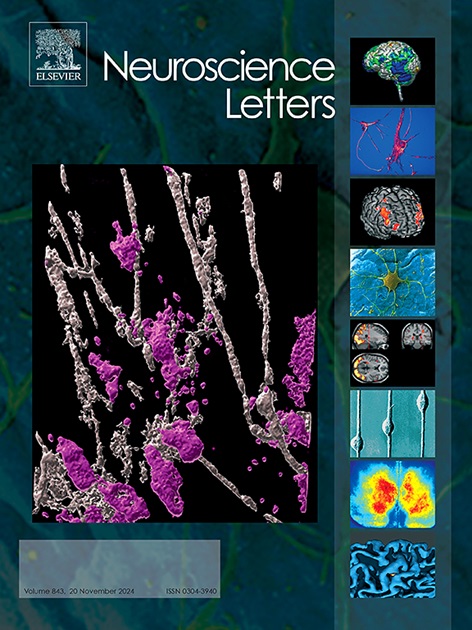雷公藤衍生的雷公藤红素通过关键残基相互作用抑制5-HT3A受体:比较电生理和对接研究
IF 2
4区 医学
Q3 NEUROSCIENCES
引用次数: 0
摘要
本研究考察了三种雷公藤化合物——雷公藤红素、雷公藤甲素和雷公藤甲素对5-HT3A受体的影响。使用双电极电压钳记录,我们发现所有三种化合物可逆且浓度依赖地抑制5- ht诱导的内向电流(I5-HT),与雷公藤甲素(~ 40%)和雷公藤甲素(~ 30%)相比,雷公藤红素在100µM下表现出最强的抑制作用(~ 83%)。它们与电压和用途无关的抑制作用表明它们不是开放通道阻滞剂。进一步的分子对接和突变分析表明,雷公藤红素与K127和Y114结合,这些位点的突变显著降低了其抑制作用。总的来说,雷公藤红素、雷公藤甲素和雷公藤内酯可能通过抑制5-HT3A抑制过度活跃的肠道信号,雷公藤红素是一种很有前景的治疗候选者。本文章由计算机程序翻译,如有差异,请以英文原文为准。
Tripterygium-derived celastrol inhibits 5-HT3A receptors via key residue interactions: A comparative electrophysiological and docking study
This study examines the effects of three Tripterygium wilfordii compounds—celastrol, triptolide, and triptonide—on 5-HT3A receptors. Using two-electrode voltage-clamp recordings, we found all three compounds reversibly and concentration-dependently inhibited 5-HT-induced inward currents (I5-HT), with celastrol showing the strongest inhibition (∼83 % at 100 µM) compared to triptolide (∼40 %) and triptonide (∼30 %) at 300 µM. Their voltage- and use-independent inhibition suggests they are not open-channel blockers. Further molecular docking and mutational analysis revealed celastrol binds to K127 and Y114, with mutations at these sites significantly reducing its inhibitory effect. Overall, celastrol, triptolide, and triptonide may suppress hyperactive gut signaling via 5-HT3A inhibition, with celastrol emerging as a promising therapeutic candidate.
求助全文
通过发布文献求助,成功后即可免费获取论文全文。
去求助
来源期刊

Neuroscience Letters
医学-神经科学
CiteScore
5.20
自引率
0.00%
发文量
408
审稿时长
50 days
期刊介绍:
Neuroscience Letters is devoted to the rapid publication of short, high-quality papers of interest to the broad community of neuroscientists. Only papers which will make a significant addition to the literature in the field will be published. Papers in all areas of neuroscience - molecular, cellular, developmental, systems, behavioral and cognitive, as well as computational - will be considered for publication. Submission of laboratory investigations that shed light on disease mechanisms is encouraged. Special Issues, edited by Guest Editors to cover new and rapidly-moving areas, will include invited mini-reviews. Occasional mini-reviews in especially timely areas will be considered for publication, without invitation, outside of Special Issues; these un-solicited mini-reviews can be submitted without invitation but must be of very high quality. Clinical studies will also be published if they provide new information about organization or actions of the nervous system, or provide new insights into the neurobiology of disease. NSL does not publish case reports.
 求助内容:
求助内容: 应助结果提醒方式:
应助结果提醒方式:


